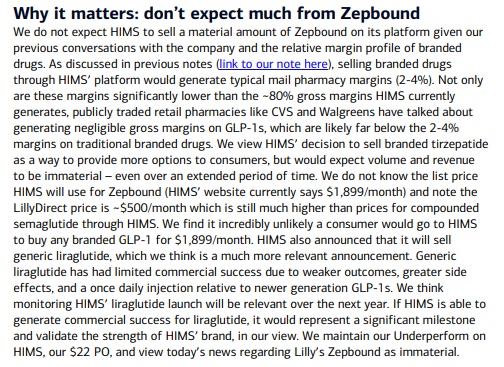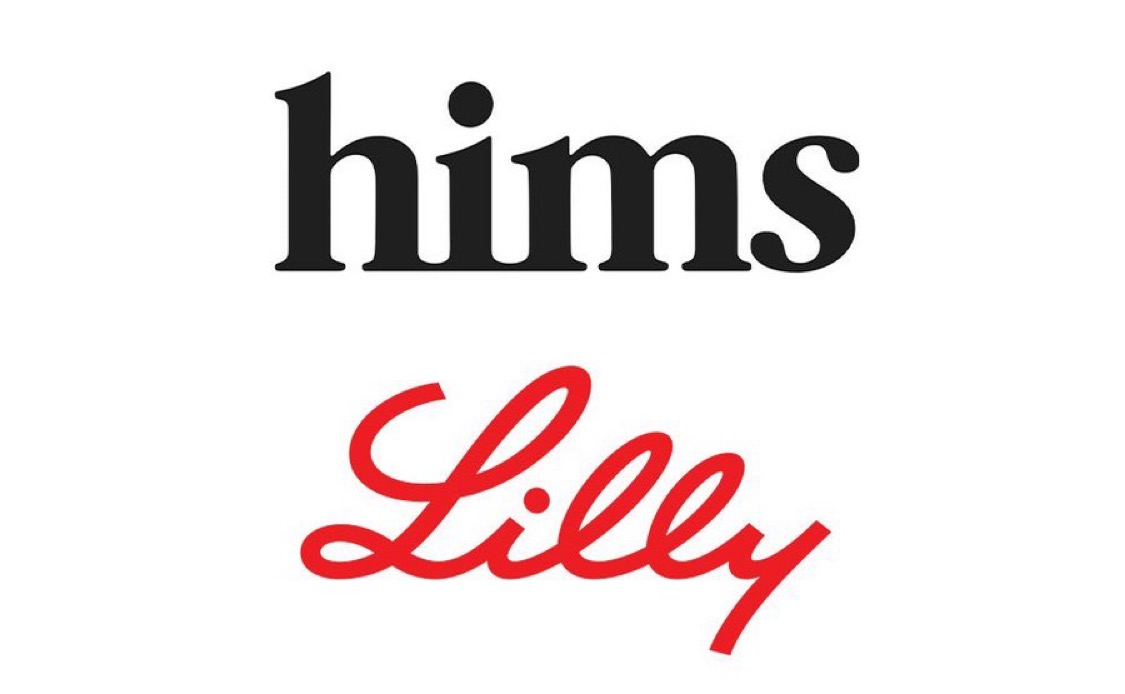The problem with this partnership is that the margins are significantly lower than if the company manufactures and distributes the drugs itself.
It is true that $HIMS (-7,27%) benefits in the short term from a marketing boost along the lines of: "Look what we're offering now".
It is also conceivable that the expansion of the range of GLP-1 drugs could lead to sales growth. In addition, a partnership with a well-known brand provider can provide more credibility from the outside.
But this is also where the risk lies: these new drugs could undermine the company's own compounding business. Many providers may prefer to rely on FDA-approved preparations because they are on the safe side legally and the risk of treatment errors is reduced.
In addition, the margins of such partnerships are extremely low. The gross margin for the in-house production of semaglutide was around 50%. This can hardly be achieved through a partnership - the same level of profitability is far from realistic.
At first glance, the partnership looks like a PR success. However, if you seriously want to generate sales through this, you jeopardize the margin in the entire segment and at the same time extend the time until the marketing costs are refinanced.
Comment from Bank of America:
-> assess the partnership as critical






